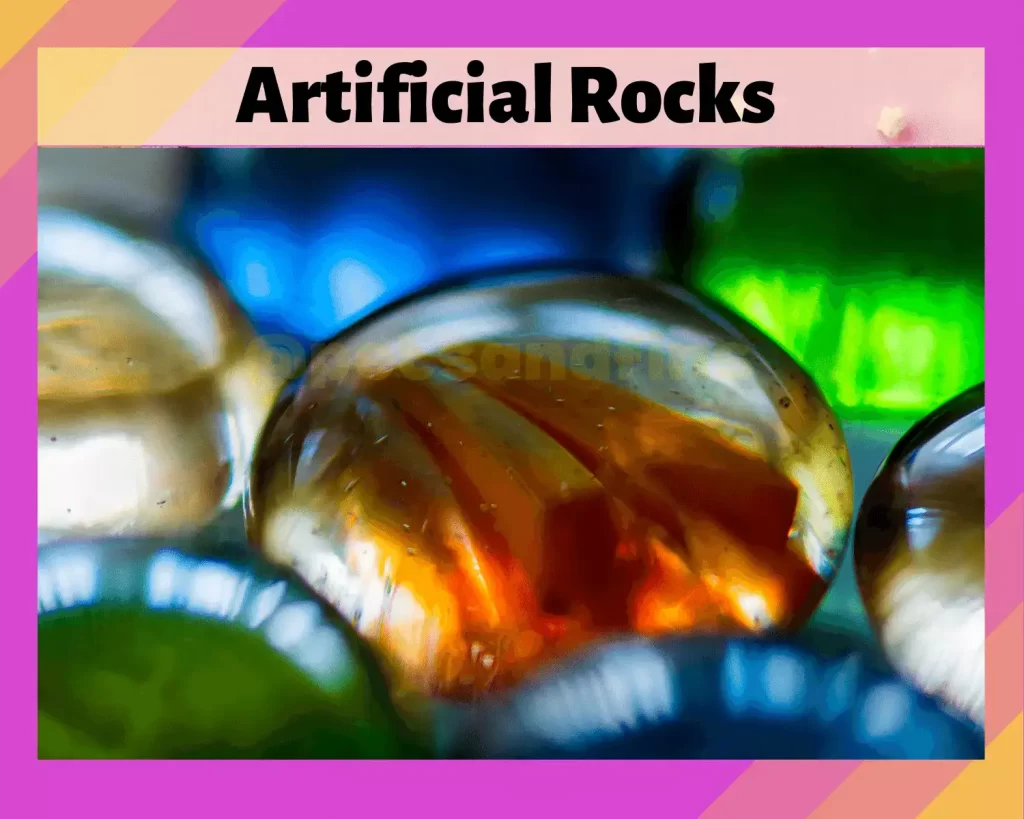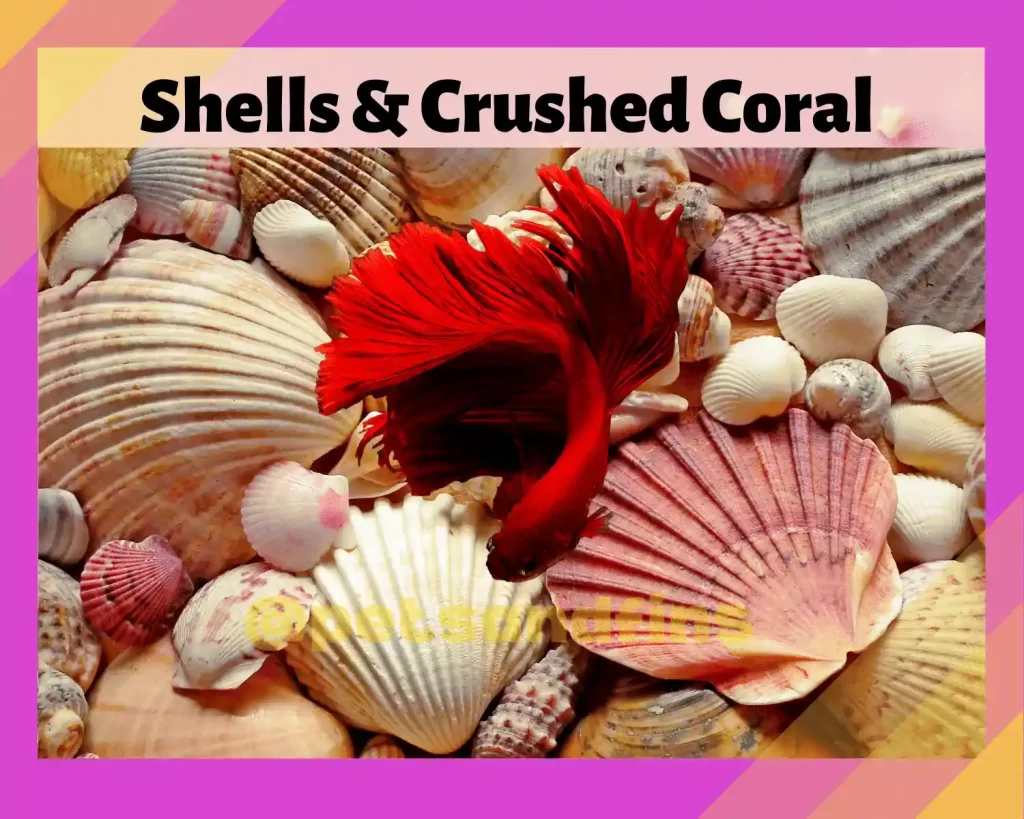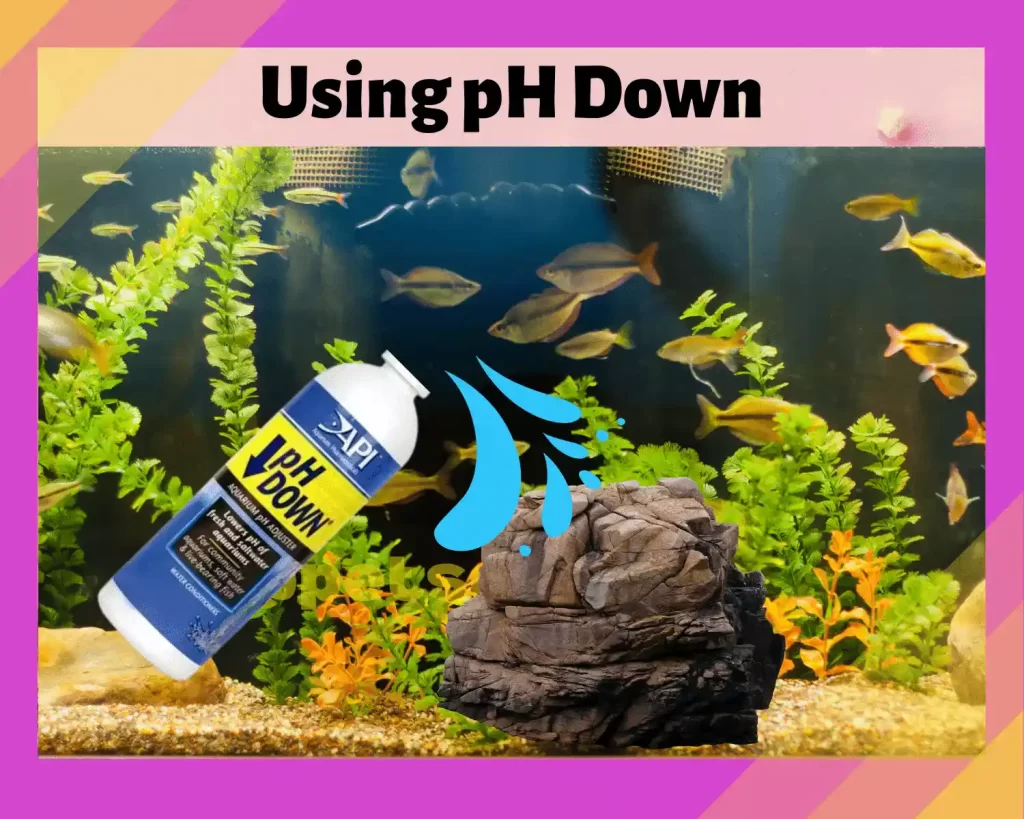When you are setting up a fish tank and you want rocks in your set up, it is important to have the right kind of rocks for aquarium. The rocks undoubtedly have decorative value, but can also alter the water parameters. This article is going to talk about different kinds of rocks that you can use in your fish tank and will give some tips on how to test them before using them, so you don’t kill your fish without knowing it.
Best Rocks For Aquarium

Ohko Dragon Stone
Ohko Dragon Stone is one of the best rocks suggested for aquariums. This stone has amazing shapes that are perfect for iwagumi aquascapes. It also doesn’t alter pH, so you don’t have to worry about any changes in your water chemistry when you add it to your tank. This rock is just incredible—both in its shapes and its ability to hold up to the toughest tank conditions.
And it’s durable! You can even use this stone in saltwater tanks without worrying about it being affected by salt or other minerals.
The Ohko Dragon Stone has a very natural feel and look, which makes it perfect for any aquarium. There are many shapes and sizes available—you won’t have trouble finding one that matches your décor.
Black Lava Rock
Black lava rock is a great addition to your aquarium. It’s porous and can house bacteria, fungi, and other microorganisms. It also has a dark color that gives an interesting look to your aquarium.
However, before you add it to your tank, you should make sure that you’re ready for it. You have to be careful when using black lava rock in your tank.
If you don’t clean it thoroughly before use (or if you’re not sure that it hasn’t been exposed to infection), there’s a chance that harmful bacteria could grow on it and infect your fish.
You also need to make sure your tank is infection-free before using black lava rock—if your fishes have been dying or looking sick, it isn’t the right time!
Black lava rock can be used after a good amount of planning due to the fact that it’s black in color. Black lava rock is a great addition to any aquarium.
It provides a natural environment for your fish and helps you create a beautiful aquatic landscape that will enhance the look of your tank.
The lava rocks are soft and smooth, making them easy to clean and maintain. They come in various shapes, so you can choose the one that best fits your needs.
Seriyu Stone
Seriyu stone originated in Japan, and it was outlawed for export in 2008.
If someone is telling you they have seriyu stone for sale, don’t fall for it—it’s a scam!
Seriyu stone is an ornamental rock that can be used in aquariums. It has a unique appearance and texture, and it’s incredibly easy to maintain—which is why so many people love it. But if you come across anyone claiming to sell seriyu stone, walk away as fast as possible.
There are several look alike stones that are being sold as Seriyu.
These stones range from the same color to a similar shape and size.
Redwood Petrified Rocks
The redwood petrified rock is one of the most unique rocks used in aquariums today. It is actually redwood that got fossilized into rock over millions of years.
They are very unique in their shape, rich in color and they have a reddish tinge probably due to the sand particles that coated the wood.
The redwood petrified rock is used in aquariums as decoration. They can be stacked together to create caves or arches or they can be placed at different levels to create an interesting landscape for your fish tank.
Slate Rocks
Slate rocks are a great addition to your aquarium.
These rocks are formed from volcanic ash and contain some clay, so they can be split into thin slabs. They are formed by strong levels of compression, which gives them their unique texture that makes them perfect for your aquarium.
It has a grainy pattern that makes it look like a rock out of the water, but it’s actually quite smooth to the touch. You can choose between smooth and rough sides, depending on what you want to use it for.
Slate has a grainy pattern that gives it its distinctive look. The texture can be smoothened with sandpaper if you like the look of it rough but don’t want sharp edges on your slate rock additions.
Slate does not alter pH and that’s a great plus for aquariums with stable pH levels.
The best thing about slate is that it is easy to clean and maintain. Also, slate is very durable and will last for years without chipping or breaking apart unlike other rocks like limestone or sandstone which are more fragile in nature.
Difference Between Shale & Slate
If you’re looking to put together an aquarium, you might be wondering what the difference is between shale and slate rocks.
Shale crumbles into pieces easily and gives you a thumping sound when you smash it. It contains more mud than slate does.
It is also duller in color than slate. Shale become slate over years. That’s an evolutionary process which won’t happen in your lifetime.
So, remember to buy slate and not shale.
Holey Rocks
Do you have a problem with your aquarium’s pH level being low?
If so, you may want to consider using holey rock for aquariums. This is a great option because it has a high content of limestone, which will help to increase the pH in your tank.
If you have been having trouble keeping your pH where it should be, this can be a great way to get back on track and keep your fish healthy and happy.
Holey rock for aquariums is an interesting option for people who want something other than the standard gravel or sand for their tank.
This is a great choice because it helps baby fish hide and also helps roots attach themselves to the rocks.
When choosing holey rock, you will have to plan a set up because they look very different from normal rocks. They are very creamy in color.
Mountain Stone
Many of you might be looking for a way to increase your pH in your aquarium.
Mountain stone is an excellent option for this! It’s light in color, light in weight, and contains calcium carbonate. When you add it to your tank, it will help raise the pH levels and keep them there.
Another reason is that mountain stone is so versatile! Not only is it great for fish tanks; it also works great as a base for waterfalls and terrariums.
Rainbow Rock
Rainbow rocks for aquariums are a fun and creative way to add color, pattern, and depth to your aquarium. They’re also very ornamental.
Rainbow rocks are made of natural materials that come in many different colors and patterns, so you can get exactly what you want for your aquarium.
The rainbow-colored design on these stones gives them an aesthetic appeal that makes them look like they were made by hand instead of being naturally formed in nature.
They can be used in any aquarium, from a tiny Betta tank to a large saltwater reef tank.
They are natural and will not pollute your water or harm your fish. They look great when placed on the bottom of your aquarium, with each stone having a different coloration. The Rainbow Rocks will add life and vibrancy to any aquarium.
These rocks are easy to clean and maintain, making them an excellent choice for anyone who wants a beautiful but low-maintenance aquarium. Also, they are safe and do not alter water parameters thus making it safe for your fish.
Artificial Rocks For Your Aquarium

Artificial rocks for aquarium are man-made and are not natural. They can be of three varieties.
Mixed Material Rocks
These the most common type of artificial rock for aquariums. These rocks are made from a variety of substances including sand or soil, cement powder, and crushed rocks.
They are designed to look like real rocks but they do not have the same properties as natural rocks. Except the benefits of aesthetics, these rocks do not help the eco-system in any way.
Plastic Rocks
Plastic based artificial rocks are made out of plastic material such as polyurethane or polyurea resin mixed with other additives such as sand or silica gel to achieve different textures on the surface of the rock.
These materials do not react with water so they are ideal for keeping fish in an aquarium with higher salinity levels. Although there rocks are durable, they cannot be said to be 100% safe in acidic aquariums.
Acrylic Rocks
Acrylic rocks are made from materials that contain both acrylic polymers along with glass particles which give them an appearance similar to natural stones.
They are available in different colors and shapes.
Benefits Of Having Rocks In Your Aquarium

Rocks for aquariums are an easy way to infuse your aquarium with natural beauty and color. They also have many other benefits that will make your fish happy, including:
Aesthetic value: rocks add beauty and color to your tank, making it look more like a natural habitat for your fish.
Allow fish to hide – especially baby fry: The nooks and crannies on rocks are perfect for hiding, which makes them ideal for young fry who need a place to rest.
Allow plants to attach themselves: For plants that attach themselves, such as Java moss or Anacharis, rocks provide a stable surface that they can grow on.
Increase or decrease pH – depending on the rock: Some types of rock will increase the pH in your tank while others will lower it!
So if you’re having trouble keeping your water at the right level, try adding some new rocks! You might find yourself with an easier time maintaining a healthy ecosystem after just one addition.
Host good bacteria: If you have live rock or live sand in your tank, then you already know about this one!
Having these types of rocks in your aquarium will help keep the water clean by hosting beneficial bacteria that can help break down waste products from
How To Test Rocks?

A lot of people don’t realize that rocks can be a key addition to your aquarium, but they can really change the way your fish look!
To decide which rocks you want for your tank, there are a few things you should do first. First, make sure you have a pH testing kit on hand. You can use any type of digital or manual kit—just make sure it’s accurate! After you’ve got your test ready, take some water from your aquarium and test the pH level. You’ll want to note this reading before moving on to the next steps.
Next, place the rock in the same water and wait 48 hours before measuring the new pH level.
If there is an increase or decrease in pH then, you will have decide if the rock is suitable for your tank. If the pH level after placing the rock is in the lower or higher range, then it may not be apt to use that rock in your tank.
Can You Use Outdoor Gravel & Rocks?

Rocks for aquariums are a popular option for decorating an aquarium. However, rocks from outside your home may contain toxic chemicals that can leach into your aquarium water.
Even if the rocks pass a pH test, they may still be contaminated and lead to infection. They may also discharge minerals which may be harmful to your fish.
Even though many people are tempted to use outside gravel and rocks in their aquariums, we do not recommend it. Even if you need to – testing is mandatory!
Shells & Crushed Coral

Crushed coral is attractive, inexpensive and safe for both freshwater and saltwater aquariums. It’s an excellent substrate for a marine aquarium, as it provides surface area for beneficial bacteria to colonize while offering a range of different substrates for fish to graze on. Coral sand is also ideal if you want to create a natural environment in your aquarium that looks like the ocean floor.
However, crushed coral should not be used as a substrate in freshwater tanks due to its salt content and high calcium content. This can cause issues with pH balance and damage delicate fish gills or fins.
Another drawback is that crushed coral may leach phosphates into the water column over time unless you replace it regularly. Shells and corals are only used to increase pH in tanks and for a temporary period.
Using pH Down

When you’re trying to maintain a healthy aquarium, it’s important to know what kind of rocks you can use. Rocks for aquariums need to be safe for your fish.
One way of figuring out if a rock is suitable is by using pH down. A lot of people don’t have this handy all the time, but it’s easy to get at any pet store or online. The testing method is simple: pour some pH down on the rock and see if it fizzles. If it does, then it’s not suitable for your aquarium unless you are trying increase pH in your aquarium.
Things To Remember

Aquarium rocks are a great way to add some personality and texture to your aquarium.
However, before you go out and buy them, there are a few things you should consider.
1. Consider the water chemistry in your tank:
– Rocks can alter the chemistry of the water, so make sure they don’t contain high levels of calcium (which can increase pH).
– If you want to lower pH, look for rocks that contain little or no magnesium (such as limestone), but be careful when adding these rocks because they may be abrasive if not cleaned regularly.
2. You need to know where your rock will end up:
– Make sure that your aquarium is large enough for your rock and that it will fit nicely in one spot so it doesn’t move around too much over time (it could scratch or damage itself against other objects).
3. Rocks should be cleaned regularly:
– Remember that rocks can become host to algae or bacteria over time so it’s important to keep them clean. However, if there are no signs of infection in the tank like dying fish, be careful not scrub off the good bacteria.
- Remember not to place the rocks in such a way that they don’t cast pressure on the walls of the tank.
Conclusion
On the whole, rocks are a great addition to your fish tank. The aesthetic value of a beautiful aquarium is undeniable, and the benefits of incorporating rocks into your aquarium are many. However, care is required so that they don’t alter the water parameters. Once you take care of these basic things, just go ahead & enjoy your aquarium.



